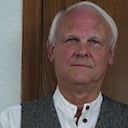What is a seiche?
Have you ever seen bathwater slosh from one end of the tub to the other and back again? If so, you have watched a miniature seiche. Seiches are a curious natural phenomenon which, on a larger scale, can cause damage similar to, and as extensive as, that from a tsunami or storm surge.
A seiche (pronounced “saysh”) is a standing wave in an enclosed or partially-enclosed body of water. Seiches can occur in rivers, canals, lakes, reservoirs, swimming pools and hot tubs, bays, harbors, and even coffee cups.
The back-and-forth effect is caused by resonance in a body of water which has been disturbed. While a seiche might be caused by a landslide or an earthquake, more often they are created when strong winds and rapid changes in atmospheric pressure push water from one end of a body of water to the other. When the wind dies down and no longer exerts pressure, the body of water that was shoved forward subsides, initiating the back-and-forth sloshing motion. In addition to a physical disturbance, the other key requirement for a seiche is that the body of water be (at least partially) enclosed, since hitting a boundary/barrier is what enables the waves to bounce back.
The term was first used by the Swiss hydrologist François-Alphonse Forel, who made the first scientific observations of seiches on Switzerland's Lake Geneva in the 1890s. The word is derived from the Swiss-French dialect word “sèche” which means "to sway back and forth", and is rooted in Latin.
More Info:
en.m.wikipedia.org



